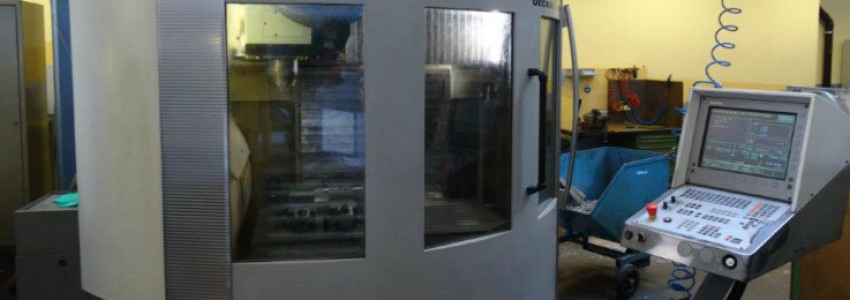
Kitmondo
09 Nov 2016
Once you have chosen the appropriate type, size, and capabilities of your machining center, it is time to consider shipping options. Shipping heavy equipment can be a particularly daunting and multifaceted task, so becoming familiar with the complexities of handling, transporting and transferring a heavy and/or oversized load is essential to making sure this process is completed without any significant setbacks. Proper shipping ensures that your equipment is packed correctly so that it arrives in good condition, labelled correctly so that the good arrive on time and at the right place, documented correctly to meet legal requirements, and insured against damage, loss, pilferage, and delay.
Size and location of machining center
A significant factor to consider first is destination, as the shipping process is largely dictated by the size of your equipment, and the distance you need it transported. This is why the first step is to obtain accurate readings of your machining center’s dimensions and weight, which will help you determine whether your chosen hauler can handle the size and weight of the equipment.
For regional shipments, flatbed hauling is the most common method. Flatbeds are available in a variety of sizes and capacities, and can carry up to 24 tons. Special trailers can also be used for over-sized or very heavy equipment, in addition to step deck or double drop trailers. However, for shipping across continents, there is one main option for used machining centers: ocean freights. Ocean freights are advantageous because they are one of the cheapest ways to transport goods. They also have a much larger capacity than other forms of transportation, meaning they can service large orders with ease. Whichever you choose will depend largely on the amount of time and money you are able to invest.
Other factors to consider
Once the method that is most convenient for transporting your machine has been determined, secondary factors can then be considered. For instance, a reputable shipping company will go beyond simply boxing up your machine. They will ensure that your equipment is packed safely in solutions that provide shock and vibration protection, as well as corrosion inhibition if needed.
Obtain necessary permits
Many countries have their own guidelines and regulations for securing and transporting heavy equipment. Make sure you are familiar with your own country’s rules, as well as the country you are shipping to/from. Generally, oversized and overweight loads require special permits to be transported on the road. Keep in mind that road transport may involve the equipment going under power lines, bridges, or on small roads. Work with the transporter prior to the pickup date to secure all necessary permits.
Preventing corrosion
To ensure that your machine is fully functional when it arrives, you may need to take measures in order to protect it from the environment, degradation and other things that could damage it. Vacuum packing can be a great solution for machines traveling by road or even water, because it prevents dirt, particulates and other substances from getting into the machine. Vacuum packing also keeps moisture out to prevent oxidation.
Tie down devices
Tie down devices are what secure your machining center to the transport vehicle. Be sure that there are no knots, damage, distress, or weakened parts. Each tie down must be attached and secured to prevent it from becoming loose, unfastening, or opening while the vehicle is in transit.
Be prepared for pickup and drop-off
When your machine arrives, be sure that there is an open area at the drop-off point where it can be unloaded as easily and quickly as possible. You may need added equipment to complete this process, such as loading docks, ramps, or cranes.
Advantages of full service vendors
Because of the extensiveness of machining center packaging and shipping, many buyers seek vendors that are capable of providing “full service” activities. This means that a single vendor will be responsible for all the activities involved in the total production of the machine, including packaging and drop shipping. Full service vendors can help ensure that deliveries avoid being delayed due to poor directions, unusual addresses, or obscure locations. Furthermore, they make arrangements so that shipping and receiving docks are designed for minimal congestions and easy access.
















